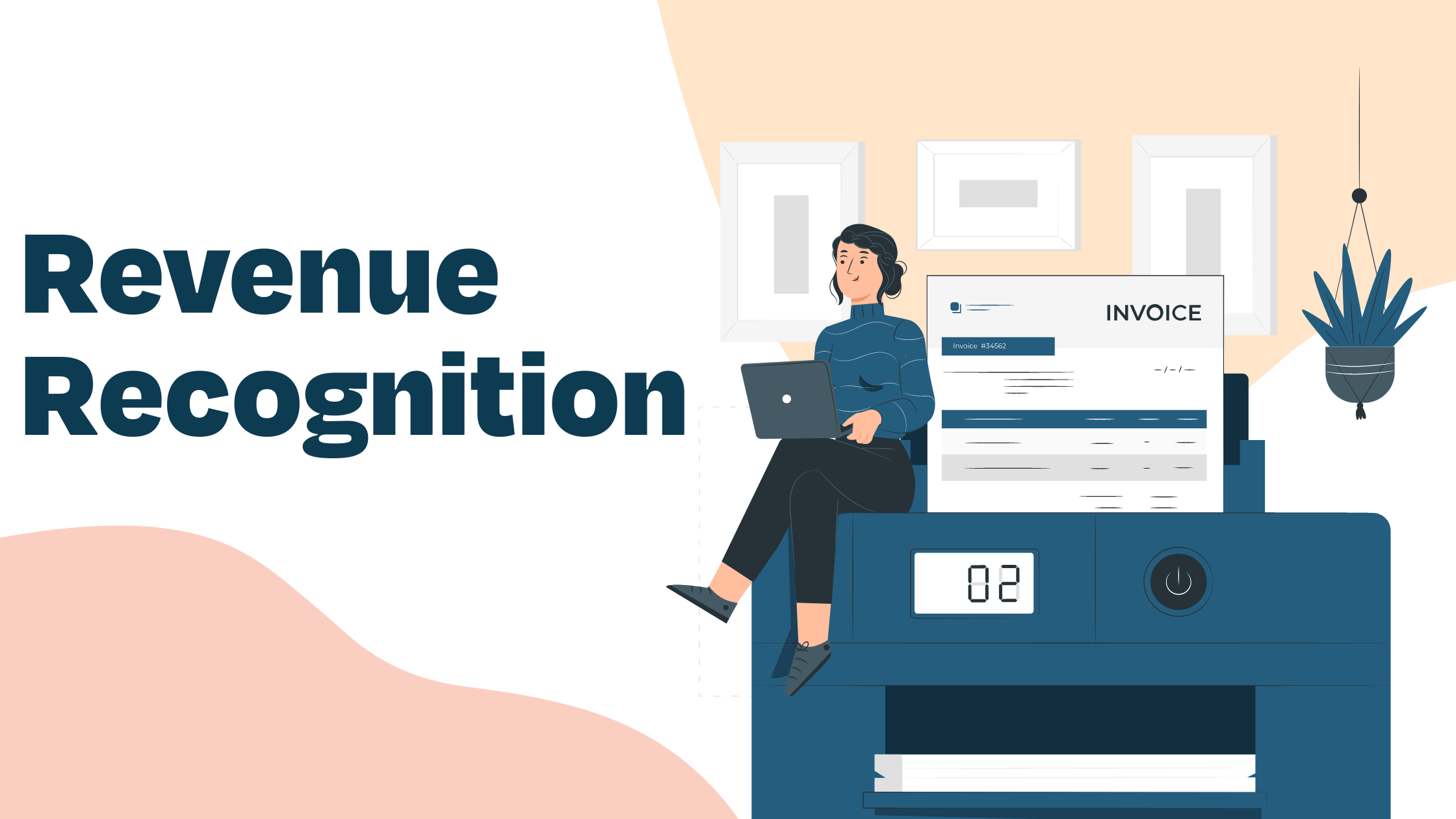Renegotiating Lease: Pandemic Tips for Small Businesses
I’m so happy to spotlight Mike Carnes of Urban Collective next in our Client Spotlight series! In May I had a Zoom call with Mike, founder and...
13 min read
Enzo O'Hara Garza
:
March 09, 2020

How long a disruption to typical income levels can your small business survive? What adjustments can one make to continue garnering revenue during an economic slowdown? How serious is this COVID-19 situation, anyhow? Read on for answers.
Disclaimer -- This article is going to touch on a serious subject with an occasionally lighthearted tone. It is not our intention to diminish the seriousness of the situation with COVID-19, nor to morbidly capitalize on the fear. Our duty is to prepare businesses for real problems they may face, and our preference is always to use a touch of humor where possible. We have already had multiple clients ask us how to weather what is coming. No matter how serious the health impact ultimately becomes, the economic impact is already showing itself and is only likely to continue.
Running a small business always involves balancing known risks to maximize reward. Day-to-day small business owners have to keep abreast of many momentary and ongoing concerns in order to make profits and grow the business. Sometimes external forces (like, say, a global pandemic or an act of god) come along and add unexpected risks. The likelihood of having a specific plan to navigate a sea of unknown risks is low. In this article we will outline the crucial importance of accurate bookkeeping; how knowing your numbers can make surviving a surprise state of upheaval possible.
Our hope is your business is not affected by the forthcoming second order impacts of this pandemic. If it is, we hope this information proves useful to your small business. We’ll begin by outlining a roadmap to financial clarity and end with specific information employers need to know for COVID-19 specifically. Without further ado, let’s dive in!
Financial Statements tell the story of a business, without any room for fiction or half-truths. More than just black and white numbers on a screen, they offer the opportunity to question everything, dig in, and actually understand the root causes of why things work as they do. Financial Statements, like the Income Statement and Balance Sheet, are jumping off points for most successful businesses, useful for understanding important questions, which often start with: who, what, where, when, why, and how.
For example, your bookkeeper should help you concretely answer these questions:
Who are my best customers and how can I keep them?
What caused a spike or dip in my expenses?
What marketing efforts are working or are not working?
Where can I trim expenses while maintaining the quality of my products or services?
When should I begin planning for my busy or slow season?
Why was (or wasn’t) my company profitable?
How can I pivot to maintain my relevance or position in the current market?
However, the true magic of clear bookkeeping is not just the ability to look backward. A well developed chart of accounts and up-to-date accounting system can help predict the future! With a savvy bookkeeping setup, you can predict the growth of your organization, plan for seasonality, and, if push comes to shove, determine whether or not you have enough cash on hand to weather an upcoming storm.
Want some personal help?
We offer prospective clients free consultations and never charge current clients extra for phone calls, video calls, and email support.
While looking at a big juicy number (like Gross Revenue) might feel good, diving deeper into your financial metrics is what will really help you gauge performance. On the flip side, if a financial metric or Key Performance Indicator (aka KPI) doesn’t inspire action, it’s isn’t going to help either. We should begin by first asking, “What is the objective and does this KPI have meaningful business outcomes”? The goal is to arm our clients with crucially relevant information, not overwhelm them with analysis paralysis.
The questions we hear most often from our clients are:
Am I charging enough for my products or services? (Gross Profit Margin or GPM)
Am I collecting from my customers quickly enough? (Accounts Receivable Turnover Ratio)
What’s my bottom line, and how does it compare to my revenue? (Net Profit Margin or NPM)
What does it take to acquire a customer? (Customer Acquisition Cost or CAC)
What does a customer spend with my company, on average? (Lifetime Customer Value)
Are my marketing efforts paying off, or am I sinking money into a black hole? (CAC:LTV)
Can I pay my short term obligations? (Current Ratio)
What will happen if the money stops coming in? How long can I survive? (Runway and Burn Rate)
Gross Profit Margin (aka GPM), can answer the first question. By looking at your gross revenue and direct costs by revenue stream, you can better determine whether you are likely to see a profit. Let’s pretend you are a marketing agency and are trying to determine if your different service lines are profitable (keep in mind, these are completely made up numbers for illustrative purposes only):
Service 1: Advertising Services
|
Description |
Amount |
|
Revenue |
$50,000 |
|
Direct Labor (the people doing the work) |
$25,000 |
|
Direct Costs (what you have to spend to do the work) |
$5,000 |
|
Gross Profit |
$20,000 |
If we take the Gross Revenue ($50,000) minus the Direct Costs ($30,000), we are left with a Gross Profit of $20,000. Pretty neat right?
If we divide the Gross Profit by the Gross Revenue, we get the Gross Profit Margin of 40%.
Service 2: Web Design
|
Description |
Amount |
|
Revenue |
$100,000 |
|
Direct Labor (the people doing the work) |
$75,000 |
|
Direct Costs (what you have to spend to do the work) |
$15,000 |
|
Gross Profit |
$10,000 |
If we only look at the top-line revenue of $100,000 for Web Design, we might think that we are doing quite well. We can all agree that $100,000 is more than $50,000 right?
However, If we take the Gross Revenue ($100,000) minus the Direct Costs ($90,000), we are left with a Gross Profit of $10,000.
If we divide the Gross Profit by the Gross Revenue, we get the Gross Profit Margin of 10%.
Well, well, well... How the turn tables…

Does this mean that you should completely drop Web Design Services? No. It means that you need to investigate why your costs are so high or start looking deeply at your pricing and see if you are underbidding work to get that key client, only to lose out in the end.
Another way to allay any concerns that you are underperforming is to look at industry data like Bizminer reports, or industry publications to give you a sense of whether or not you are on target. Luckily for our clients, we can provide Bizminer data as a part of our ongoing bookkeeping engagement.
Want us to pull an industry report for you (FREE!)?
Reach out and let us show you what industry metrics you should be tracking.
Another question we often get --especially lately-- is, “Are my savings goals and rainy day fund levels sufficient?”
Depends! It is impossible to know the answer to this question if you do not have an accounting system in place that accurately represents your business. What does this mean?
This means that if you are a restaurant and you generate revenue from food sales and beverage sales you need to have an income account for each line of revenue. In addition to this you need a Cost of Goods Sold account for both food and beverage costs, so that you can directly relate your revenue to what it takes to sell your food and beverages. If you have one revenue account (often just called “Income” or “Sales”), and one Cost of Goods Sold Account (or, worse, none) your financials will never be useful. Period. End of sentence.
This means no lazy accounting and no guessing. Your bookkeeper should have a full understanding of what you do, how you do it, and who your customers are. If you are an attorney who accepts deposits into your trust account, your bookkeeper should not list those deposits as revenue, for example. This would skew your numbers, and can get you into big trouble and put your ability to practice law at risk. So, a seemingly small mistake can have huge ramifications.
Also, if your bookkeeper is entering transactions differently each month, you will not be able truly gauge what areas of your business need a bit of help. This happens more often with low cost, automated accounting systems, which leave little room for professional judgement or interaction. Why look for a budget bookkeeper, when your livelihood is on the line?
Only after your finances are in a good place can you then start to look at whether or not you have enough on hand for a rainy day.
To determine this, we will first need to identify your fixed expenses and current liabilities. Fixed expenses (aka overhead) are those costs that do not change depending on the number of units sold or services provided. Fixed expenses are things like rent, insurance, property taxes, and management salaries. Current liabilities are those debts that are coming due in the next one to twelve months.
To make this simple, let’s look at what is coming due next month for this imaginary yoga studio:
|
Description |
Amount |
|
Salaries and Wages |
$15,000 |
|
Payroll Taxes |
$2,250 |
|
Retirement Benefits |
$450 |
|
Rent |
$1,500 |
|
Electricity |
$200 |
|
Insurance |
$100 |
|
Credit Card |
$100 |
|
Accounts Payable |
$500 |
|
Total |
$20,100 |
This means that, no matter what, you will need to have $20,100 available to pay your people, keep the lights on and your doors open, and keep your creditors happy. This doesn’t take into account any expenses related to producing your product, like cost of goods sold, shipping, sales commissions, etc. This is the bare minimum, “what do I need to survive?”.
A good savings goal would be 3x your overhead plus current liabilities. Don’t have this? Don’t panic. If you start by understanding what it actually costs to run your business, you can then start setting aside funds for a rainy day. Baby steps!
Another ratio worth knowing is the Current Ratio. The Current Ratio is calculated by dividing your Current Assets, or anything that can be liquidated in the next twelve months, by your Current Liabilities, or anything that is coming due in the next twelve months.
|
Example of Current Assets |
Example of Current Liabilities |
|
Accounts Receivable |
Accounts Payable |
|
Bank Accounts |
Credit Cards |
|
Inventory |
Deferred Revenue |
|
Prepaid Expenses |
Loans/Lines of Credit |
Let’s see how this works:
|
Current Assets |
Balance |
|
Checking Account |
$50,000 |
|
Savings |
$15,000 |
|
Accounts Receivable |
$10,000 |
|
Inventory |
$25,000 |
|
Total Current Assets |
$100,000 |
|
Current Liabilities |
Balance |
|
Accounts Payable |
$25,000 |
|
Credit Cards |
$10,000 |
|
Loans |
$15,000 |
|
Total Current Liabilities |
$50,000 |
If we divide $100,000 (Total Current Assets) by $50,000 (Total Current Liabilities), we get 2. This means that for every $1 we owe to our creditors, we have $2 to pay them. Generally, a 2 to 1 ratio is desirable, but this varies by industry and even season.
Want someone who cares enough to understand your business?
Working with an accountant that truly understands your small business is key.
Has anyone ever jokingly told you, “ The best time to get a loan is when you don’t need it”? Well, that is mostly true. Proactively, rather than reactively, looking for credit will serve you when your business needs it the most. Rather than waiting until the last minute to secure a line of credit, build a relationship with a banker when everything is humming along. While it isn’t advisable to depend on credit, it is a great safety net to have when things go sideways. If you have issues with traditional banking (perhaps your business is still relatively new) consider working with an alternative lender like Kabbage.
Typically, in order to get qualified for a loan, you will need to have the following information ready:
If you need a loan or line of credit to grow your business, we can prepare up-to-date financials and package up everything needed to send to a lender.
If you have a history of on-time and early payments, it may be wise to ask for extended terms, to match your cash flow cycle. This is especially helpful if your Accounts Receivable terms do not match up with your Accounts Payable terms. For example, if you ask your clients to pay their invoice on Net 30 terms and your vendors want to get paid on Net 15 terms, you will have a 15-day gap between when you are paid and when your bills are due. Unless you have sufficient cash on hand, you can quickly run into problems managing your bill payments. This can quickly spiral out of control and harm your relationship with your suppliers; something we want to avoid.
Another option is to ask for early payment discounts to shave a few bucks off of your bill. One example of this is when a vendor offers 2/10, Net 30 terms - this would mean that if you pay your vendor in 10 days vs 30, they will apply a 2% discount. However, keep in mind that if cash on hand is more valuable than a 2% discount, this might not be the best option. Your bookkeeper can help you evaluate what the best option is, based on your business.
If you manufacture or sell products, it is important to review your supply chain to be sure that they will be able to meet supply demands in any situation. Right now, the US is bracing for Covid19, aka the Coronavirus, by stocking up on pantry essentials like bottled water, canned goods, and toilet paper. If you own a store that sells these essentials, there is a sudden demand for these goods and your primary vendor is an overseas distributor, you may want to begin looking for alternative suppliers. If shipments are not able to reach the US or if ports are not operating at full capacity, you may see delays in shipments. Delays in shipments mean lost revenue, lost trust from your clients, and inflated prices. Just as it is important to diversify your investment portfolio, you should have some diversification in your vendor list. You may also want to begin investigating relationships with domestic distributors so that you can skip the shipment delays and get back to earning revenue quickly.
When qualifying for a small business loan, the application has one key question:
Who are your key customers and what percentage of sales can be attributed to these customers?
They ask this question because they are trying to understand your risk exposure. It is important to know the answer to this question because it will help you to plan for the worst. For example, if your largest customer is 50% of your total revenue and they plan to take their business elsewhere, your business may be at risk of failure unless you have sufficient cash on hand or credit available to keep you afloat until you find customers to replace them. Keeping a healthy mix of clients is important, but unless you can quickly cull that information from your accounting software, you are left guessing.
We all have heard this, but despite its simplicity, it is completely true:
Never put all of your eggs in one basket.
Let’s go back to the supply chain audit example. If you own a small store that only sells toilet paper, bottled water, and canned goods and there is suddenly a supply chain squeeze, your business may dry up overnight. Also, if you have an overabundance of something that no one wants, you are in the same situation, except with more debt and less cash on hand. It is important to watch market trends and see what your customer may want in addition to your normal product offering. So, let’s say that you can no longer offer water, toilet paper, and canned goods because your supplier cannot meet consumer demands. Consider offering refillable containers so that your customers can store water on their own, bidets that will eliminate the need for toilet paper, or other non-perishable goods to supplement their pantry.
While these examples are contrived, this can be applied to every single industry.
Spend some time thinking about what you can do to minimize your risk by creating new revenue streams. Don’t put all of your eggs in one basket.
Do you have an office, showroom, or warehouse that has a lot of foot traffic? Consider investing in a cleaning service that can clean and disinfect high-traffic areas more often.
If your sales team spends a lot of time shaking hands, offer hand sanitizer, stock up on hand soap, or encourage more fist/elbow bumps. Fist/elbow bumps not only keep you safe(ish) from germs/viruses, it also makes you look super cool.
The CDC offers more detail on how to protect employees. It's every employer's responsibility to do what they can to keep their employees safe.
If you run a team that comes into the office to do work that only requires a computer and the internet, consider adding or expanding your work-from-home policy. A 2015 study from Stanford University in California found that productivity among call-center employees at Chinese travel agency Ctrip went up by 13% when they worked from home due to fewer breaks and more comfortable work environments. At Accountingprose, we have allowed all employees to work from home since 2014 and have been able to successfully find (and retain) amazing employees we would not have found in our local market. In fact, some of our employees live in remote locations (one lived in a tiny cabin in the mountains of Colorado) and would never want to make the epic commute to our Denver head office. Our clients are also spread around the United States, so they often get the benefit of working with someone in their time zone, even if our head office is on the opposite side of the country.
Before you grow a remote team, it’s important to put a few things in place:
Make sure your employee handbook is clear on what you expect while your team is working remotely. Do they need to have a solid internet connection and be available on Slack? Write it down.Do you have a dress code for video calls with clients? Yep. Add that too.
The benefit of clearly defined policies is two-fold. First, it gives your team clear boundaries, so they know what is expected of them, and second, it gives you peace of mind knowing that boundaries have been set.
When we first allowed our team to work remotely, we made a key mistake. We didn’t have the right tech in place to manage our team from a distance. After many years of living the dream, and working remotely, we have set up the ultimate remote work tech stack:
While this list might not work for everyone, it has served us very well. We no longer have to be in an office with a dedicated server for our accounting software, because we use cloud-based accounting software. We don’t have to use email or spreadsheets to track projects, because Teamwork does it all. All of our chats are in one spot, rather than hiding in Google or other systems. Finally, we record our new hire training and release updates to our team using Trainual. Find a stack that works for you, and don’t be afraid to shake things up if need be.
What happens if a key employee quits and takes institutional knowledge with them?
What happens if you are out sick and your clients need support, but no one else on your team knows how to help them?
Do you onboard your new employees the same way, or does each person learn to do their job differently?
Forget new hires, natural disasters, and pandemic… When was the last time you took a vacation?
If the thought of losing a key person, getting sick, or taking time to rest and recharge sounds horrifying to you, then you need to start documenting your processes now. Right now. While you can easily start documenting your process in Google Docs or Word, consider using a tool like Trainual to document everything and make onboarding your new hires fun. Yes… fun!
If this sounds daunting, consider starting on this journey by reading The E-Myth Revisited and Traction, which both brilliantly outline how to get started with process documentation. They are easy reads and pack a ton of value-- spend time working on your business, rather than in your business to make a big impact.
We hope after reading the above you're feeling more prepared for what's ahead. We want to encourage not panic, but preparedness. As conferences, concerts, and other public events continue to be canceled, and millions of people are under quarantine, we're likely to see things get worse before they get better. Batten down the hatches; hope for sunshine, but have a plan for rainy days. Thank you for reading! We are here to answer any questions you may have.

I’m so happy to spotlight Mike Carnes of Urban Collective next in our Client Spotlight series! In May I had a Zoom call with Mike, founder and...
.png)
Bench is a popular online bookkeeping service that works with clients around the U.S., just like us. We often have potential clients call us and ask,...

As a business owner, tracking and recognizing your company's income accurately is essential for financial reporting, and understanding the process...